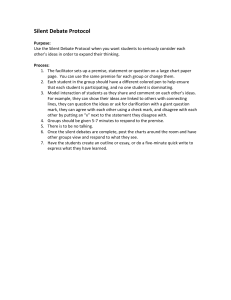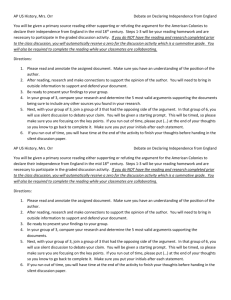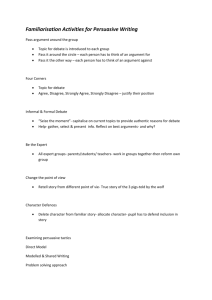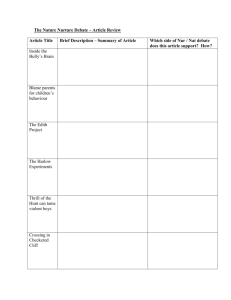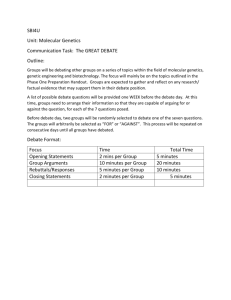Brain Writing/Silent Debate
advertisement
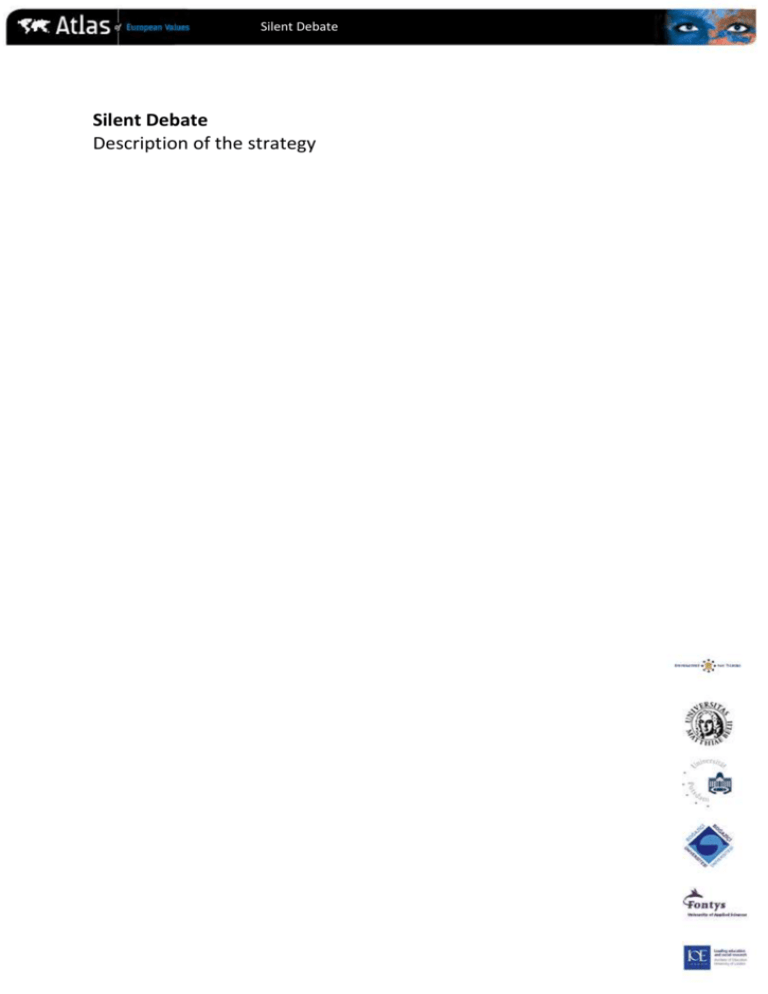
Silent Debate Silent Debate Description of the strategy Silent Debate The strategy This activity enables students to categorise and develop their ideas. In silent debate, students are arranged in groups of 4, each with a different colour pen. The central question is recorded at the centre of a large sheet of paper. Students write down their comments or thoughts (in the form of a brainstorm) that relate to the main issue. Depending on the group this will take 3 to 5 minutes. After the initial brainstorming they should be encouraged to comment and develop the points of others. The different colour pens allow the teacher to see who has made which contributions. Example (of the strategy in action) The thematic question is: Is Europe a place where expectations of women are changing? The lesson focus is: Are men and women treated equally in Europe? To start, the students should look at the map: “being a housewife is just as fulfilling as doing paid work”. http://www.atlasofeuropeanvalues.eu/map.php?id=209&lang=en The first activity is for students to identify countries which agree with this statement and which disagree. There may be some surprises here (for example, you may wish to draw their attention to Finland who strongly agrees with the statement, and their neighbours Sweden who are more likely to disagree). Introduce the main question: what sort of a country agrees with the statement “being a housewife is just as fulfilling as doing paid work”? Why would people agree or disagree with this statement? 1. Students should stand around a table (no chairs) in a group of 4, each with a different coloured pen. In the centre of each group, the main question should be recorded on a large sheet of paper 2. Students should be encouraged to make comments on the main question. 3. They then start walking around the table to read the ideas of the others and add comments based on what their neighbour has written. 4. This process is completed when you feel that students don’t have any more ideas. The activity until here is supposed to be completed quietly (so that opinions are recorded rather than spoken). The different coloured pens also allow the teacher to see what each student has contributed. 5. To debrief the activity students are encouraged to discuss their results and present their conclusions in class. Silent Debate Debriefing questions could include: a. How easy was it to consider the values of others? b. How did you use what you know of different European countries to help you? c. What other information would you need to see if your theories are correct? Why is this a good strategy to use? Silent debate is a good strategy for getting students to extend their thoughts and ideas. Working in a group enables students to rehearse and develop their arguments. They will select warrants, claims and in discussion will encounter rebuttals. The group work enables them to encounter views and perspectives that they may not have considered. The above example could be used in lessons that explore contemporary Europe, or in lessons that explore gender relationships, or the emancipation of women. Exploring the maps in this way enables students to consider why people may hold different views. During the example above, it would be valuable to encourage students to consider what they know about different European countries and how that may help them to think of different viewpoints. Why does this work with the maps? The maps from the EVS show what people think, but do not always help us to explore why they may have these opinions. This activity encourages students to think about the factors that might influence these opinions. It can be developed with clearer or more complex statements. You can also supplement the activity with other maps to offer different opinions. This project has been funded with support from the European Commission. This publication reflects the views only of the author, and the Commission cannot be held responsible for any use which may be made of the information contained therein.
